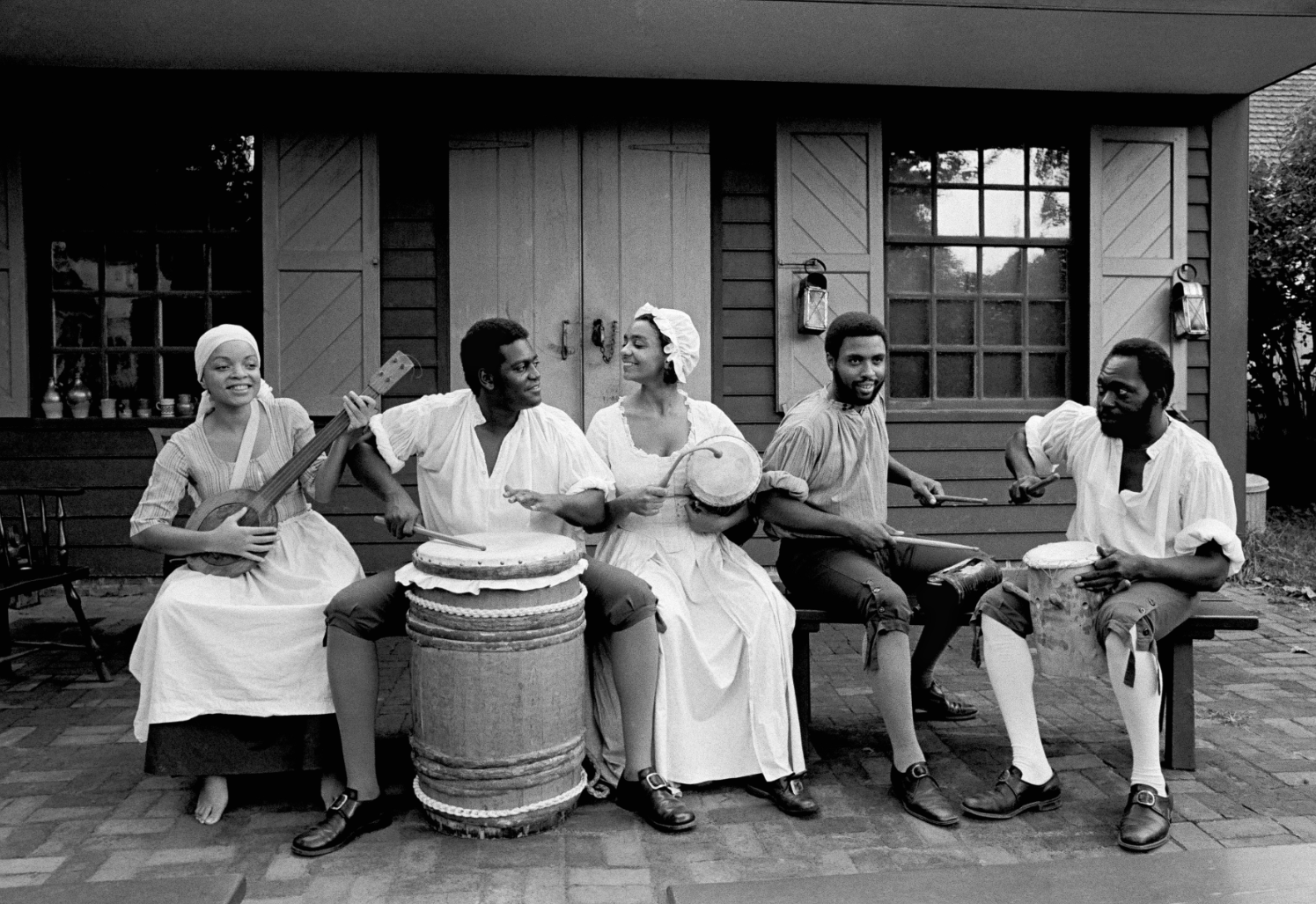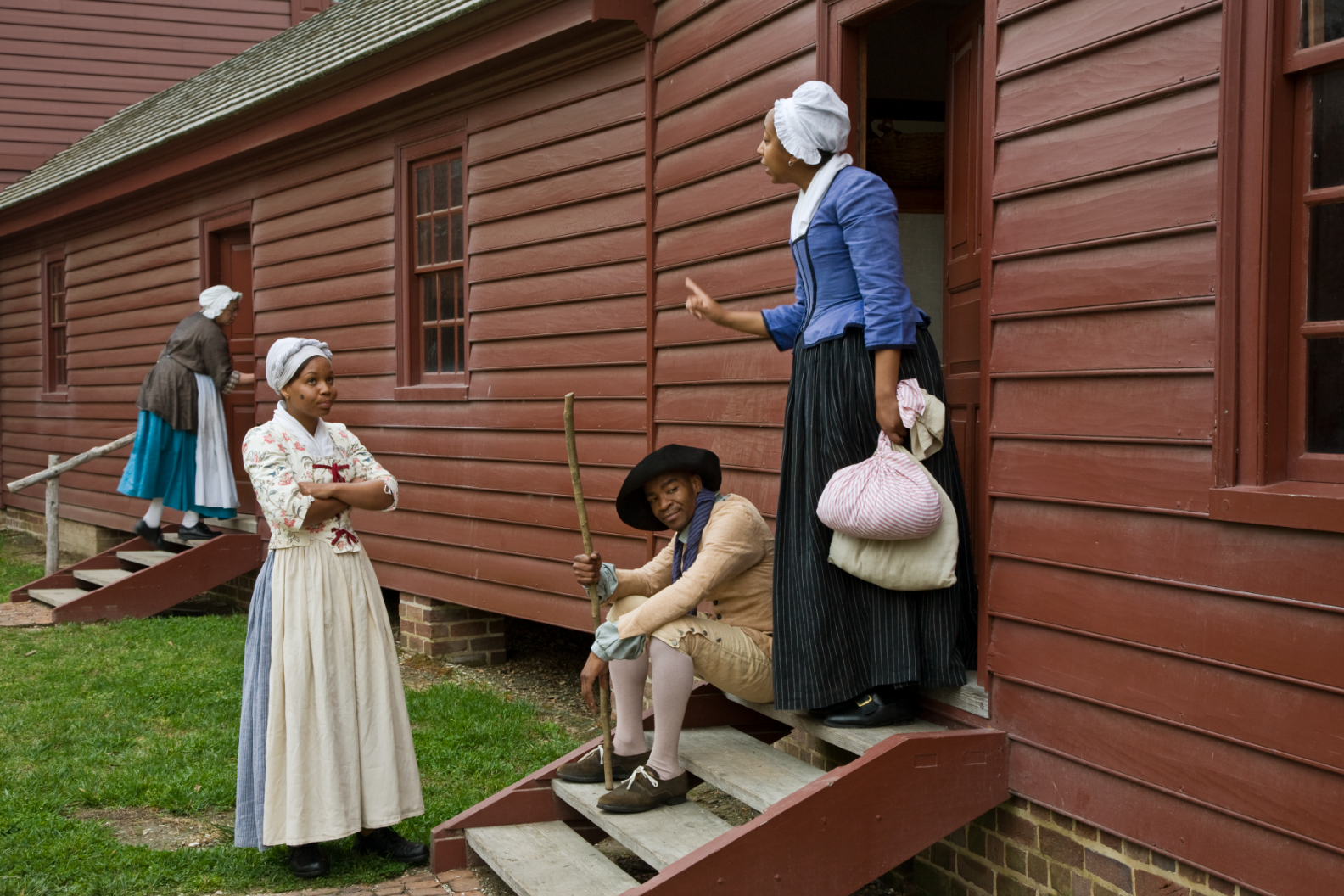Black History in Colonial Williamsburg
2019 marked the 40th anniversary of Colonial Williamsburg’s commitment to African American interpretation. Explore Colonial Williamsburg’s efforts to uncover African American history and share it with visitors to Colonial Williamsburg and beyond.
COURTESY IMAGE // THE COLONIAL WILLIAMSBURG FOUNDATION
In the 18th century, Black individuals — both enslaved people and free people of color — made up over half of Williamsburg’s population. Colonial Williamsburg’s retelling of history is not complete without their stories.
African American actors were once primarily limited to portraying carriage coachmen who drove visitors through the streets of the town in the 1930s. Today, African American interpreters are present throughout the living history museum in a wide variety of roles.
The Colonial Williamsburg Foundation’s commitment to African American interpretation began in 1979 and recently celebrated its 40th anniversary in 2019. To commemorate this anniversary, the Colonial Williamsburg Foundation recently debuted its 40th Anniversary of African American Interpretation exhibit, which visitors can see as they enter the Visitor’s Center.
The exhibit details the past 40 years of African American interpretation, complete with photos of the first interpreters and educational material about slavery and 18th-century Williamsburg’s enslaved population.
Stephen Seals, a creator of the exhibit, has worked at the Colonial Williamsburg Foundation for nearly fourteen years, and he currently serves as an interpreter for Nation Builder James Armistead Lafayette, an enslaved Virginian who acted as a spy during the American Revolution.
Seals defines the purpose of interpretation and its intended effect.
“Interpretation is meant to provoke, and that’s the main tenet of interpretation,” Seals said. “It puts something in your mind, or in your head, or your body that makes you want to know more or do more.”
As a Black man, Seals knows the history he portrays can be a difficult subject and one that continues to have repercussions for people like himself and his family. However, Seals sees interpretation as a powerful tool.
“For me, [interpretation] is about humanization,” Seals said. “There’s a human connection to it that makes you connect to me ... making us in essence the same people.”
COURTESY IMAGE // THE COLONIAL WILLIAMSBURG FOUNDATION
Lafayette has become a more recognizable name throughout the country due, in part, to Seals’s interpretation work. Lafayette, who was crucial to the development of Colonial Williamsburg and the larger American story alongside other Williamsburg locals like Edith Cumbo and Ann Wager, has increasingly been featured in states’ education curricula as one of Colonial Williamsburg’s Nation Builders.
Seals recalled how, as a child, he did not see Black Americans represented in history.
“As a kid going to museums, I didn’t often see myself represented in the history that I was getting,” Seals said.
As an adult, he has endeavored to change that.
“There’s not a fixed narrative of Virginia, of Williamsburg, of African-American — American — history, Seals said. “We are working to get closer and closer to that complete understanding … [and interpretation] is an incredibly exciting opportunity to do that.”
Aside from interpretation, the Colonial Williamsburg Foundation restores, preserves, and excavates historic buildings for public education and academic research.
The College of William and Mary has been working with the Colonial Williamsburg Foundation to research and restore the 18th-century Bray School for free and enslaved Black children following the discovery of its location in 2021. The director of the Bray School Lab, Maureen Elgersman Lee, also serves as the Mellon Engagement Coordinator for African American Heritage at the College.
“[The Bray School] invites the nation and the world into the school and therefore, by extension, to Colonial Williamsburg — to have conversations about education, about enslavement, about race, about religion, and the intersections of all those and more,” Lee said.
Those working at the Bray School Lab examine the school’s records to learn as much as possible about each of the Bray School’s scholars and their lives before and after their time there as students.
Once the Bray School is restored, it will become the 89th original building in Colonial Williamsburg.
Interpretation in Colonial Williamsburg is based on the physical history of the location, and few know this location better than Dr. Julie Richter, a professor in the College’s Department of History and the Project Manager for Virtual Jamestown.
“I always found it important to talk with the interpreters about what I had found and what I thought the records would tell us about the people who lived and worked on different sites in the historic area,” Richter said. “They often would ask me questions that just prompted me to reflect more on what I had done and helped me tease more details out of what we had.”
Richter worked on the Peyton Randolph House, a property that had housed three non-enslaved white individuals and 27 enslaved Black people at one point. Incorporating the stories and voices of these enslaved people is vital, and research and interpretation are both key to discovering and telling these stories.
Richter believes that sharing these human experiences through an interpreter — a human medium — prompts a greater understanding of the subject matter.
“It’s a way of seeing how academic information ... can be presented in different formats,” Richter noted. “In some ways, I think all academic historians should be interpreters.”
Richter also directs the National Institute of American History and Democracy (NIAHD) at the College, which partners with Colonial Williamsburg to give both high school and college students the opportunity to have hands-on experiences in museums and archaeological excavations. The goal of NIAHD is to show students that history is not limited to memorizing facts in a textbook but rather a dynamic process.
“We really try to provide hands-on experience to learn how to be a public historian and to engage with history … History is an active pursuit,” Richter said. “We like to say we do history.”
While capturing a complete historical narrative is impossible, museums like the Colonial Williamsburg Foundation continue to strive toward that goal.
“The future is not being able to leave Williamsburg without knowing that [Black Americans] were here, that we were a part of the history and a major part of the history, and that our American stories are just as American as any American story,” Seals said. “The fact that the understanding is that the story has to be everywhere here — in the historic area and within the foundation — means that we’ve come quite a long way in 40-some years now.”
COURTESY IMAGE // THE COLONIAL WILLIAMSBURG FOUNDATION



